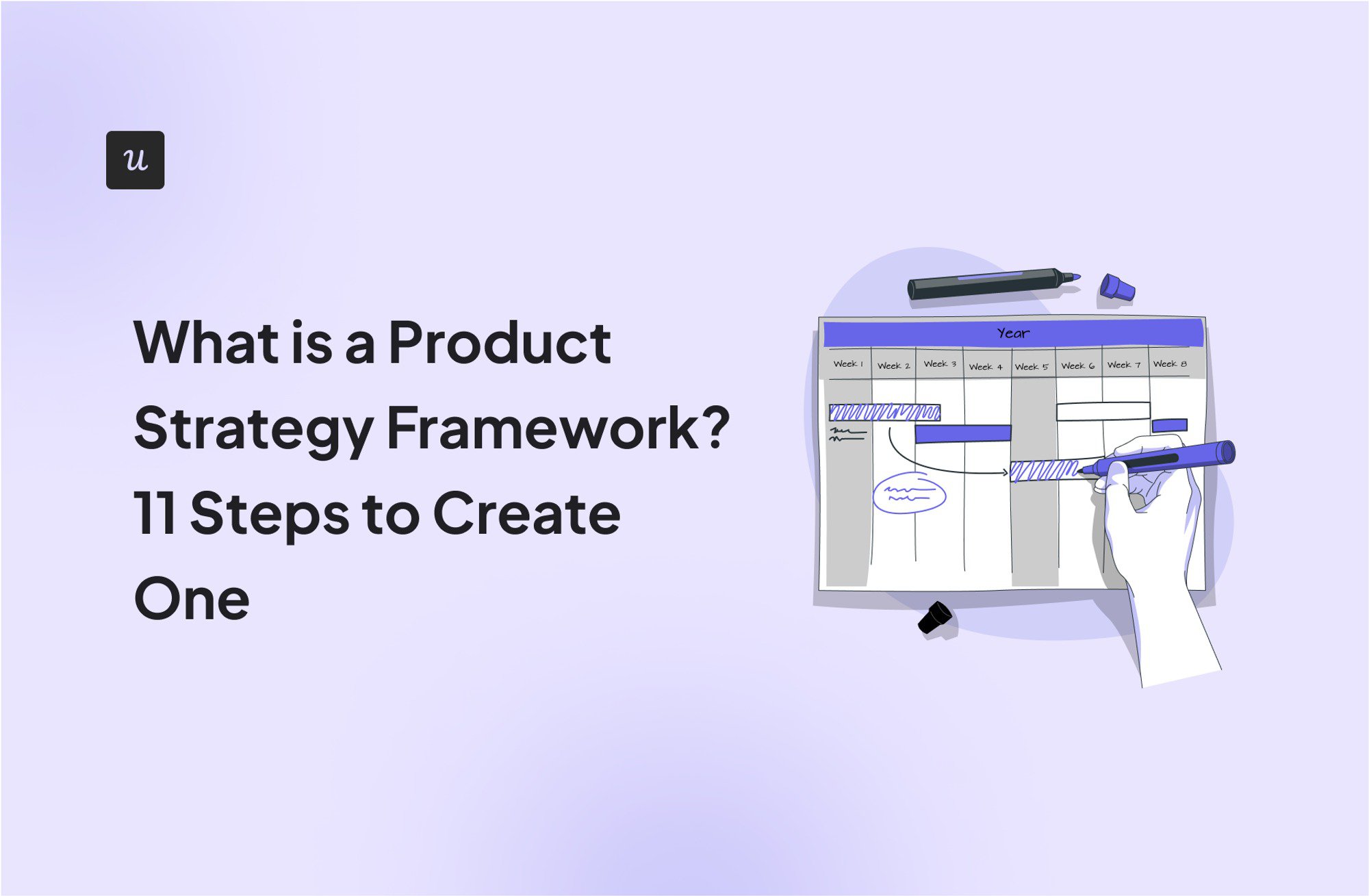
Imagine going on a road trip without a GPS—you may encounter unexpected detours and delays, waste time and fuel, and turn your once-exciting trip into a stressful scramble.
Launching a product without a well-defined product strategy framework is similar—you risk wasting resources without a clear path to success.
So, how do you outline a product strategy framework that is the foundation of product-led growth? This article will discuss the key steps to get you started. Let’s get right to it.
How well-defined is your current product strategy framework?
Try Userpilot Now
See Why 1,000+ Teams Choose Userpilot

What is a product strategy?
A product strategy is an overarching plan that uses the product vision to define product goals and how you’ll achieve them. It serves as a bridge between business objectives and the product development process.
Typically, a product strategy outlines who the product is for and how it’ll address user pain points.
Product managers are responsible for working with leadership and cross-functional teams (involving product, marketing, sales, and more) to develop a product strategy.
What is a product strategy framework?
A product strategy framework gives you a way to test, adjust, and develop your product strategy.
It encompasses various aspects involved in building a product that aligns with business goals and customer needs. These include product vision and mission, user needs analysis, goals and KPIs, pricing strategy, product roadmap, and more.
Additionally, a product strategy framework helps you monitor user satisfaction and sentiment. You can use these insights to understand whether your product strategy is generating enough traction and devise ways to improve user engagement.
Why do you need a product strategy framework?
If you want to build a product that strikes a chord with target users and impacts your company’s bottom line, a product strategy framework is a must-have because it helps to:
Align product development with business objectives
With a product strategy framework, cross-functional teams involved in product development gain a thorough understanding of the mission and vision. It helps them make decisions that align with overarching business goals.
Whether ideating a new feature or outlining a marketing plan, team members get a clear picture of whether their efforts will help accomplish these goals.
Outline goals & KPIs
A product strategy framework defines who the product is meant for and what pain points and needs it’s supposed to address, much like a product strategy.
These insights are handy in defining product goals and relevant key performance indicators (KPIs). It simplifies tracking product engagement and performance and identifying areas of improvement.
Improve resource management
Market research and analysis, which are crucial to building a product strategy framework, offer a deep understanding of user needs and competition. It allows team members to define their priorities, such as what features to develop first or which marketing channels to target.
Increase customer satisfaction
A concrete product strategy framework aligns product development decisions with customer needs and pain points. In other words, you can build a product that helps users overcome their challenges and realize their goals, which ultimately drives customer satisfaction.
Product strategy frameworks: A step-by-step guide to product success
How do you build a product strategy framework that facilitates better decision-making, improves resource management, and delights users? Take a look at the following steps:
Step 1: Develop your product vision and mission
It would help if you had a clear idea of why you’re creating a product before getting into the thick of development. So, it makes sense that the first step of your product strategy framework is to define product vision and mission.
Think of the vision as the long-term goal for your product. It serves as the product team’s North Star and informs their decision-making process.
On the other hand, the product’s mission statement outlines your purpose behind building the product. It paints a clear picture of what you want to achieve with the product.
Here’s what Userpilot’s product vision and mission look like:
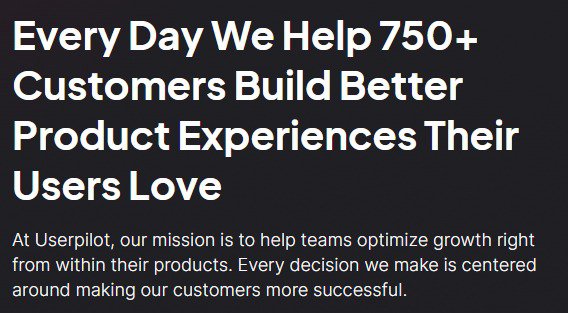
Userpilot’s product vision and mission.
Step 2: Do market research and analysis
The next step is to dig deeper into the overall market and understand whether there’s an actual need for the product. Start by collecting demographic and psychographic data about your target audience, including their age, location, occupation, values, etc. You can use industry reports and databases for this purpose.
You can use market research techniques, from interviews and focus groups to surveys, for a better idea of market needs and pain points. This is also a good time to research your competitors showing similar growth patterns using techniques like SWOT analysis.
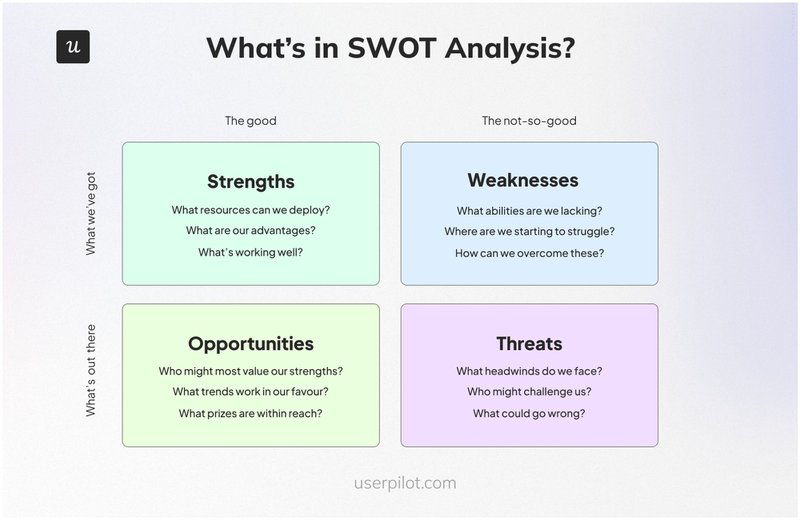
Step 3: Define your target market
A deep understanding of potential users is crucial to creating a product that lives up to their expectations and solves their pain points. It’s now time to drill down into the specific preferences, challenges, aspirations, and interests of your target users with a wants and needs analysis. Insights collected from user interviews, surveys, and other market research will come in handy here.
Use this information to understand what potential users expect from your product. You can further use market research data to segment your target audience and outline clear user personas for each group.
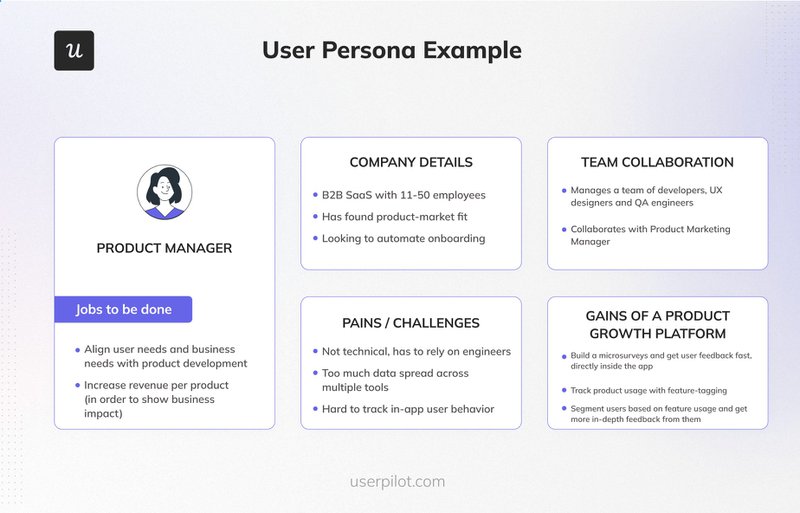
Step 4: Identify your unique value proposition
If you want your product to reach the right users, you must ensure it stands out from the competition. That starts with defining your unique value proposition (UVP).
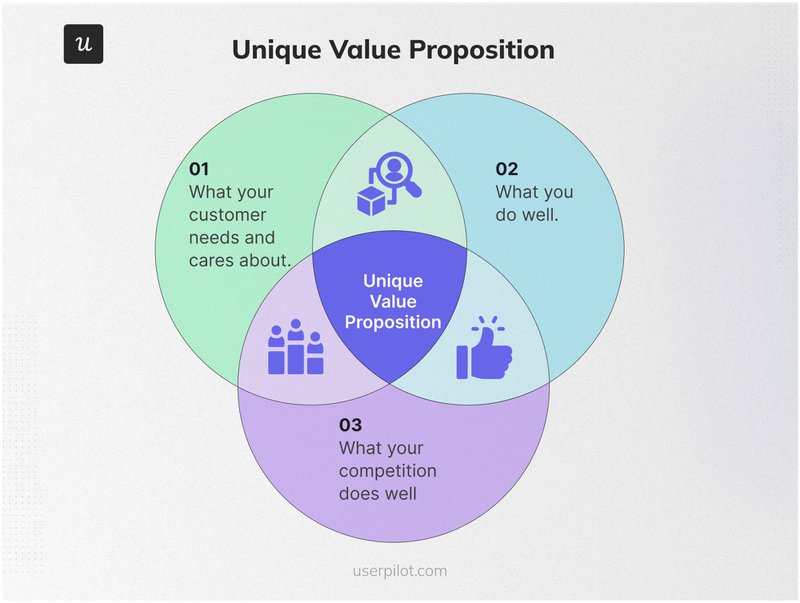
Simply put, the UVP is the answer to the question—why will users select your product over other available options? It’s a clear statement that highlights your product’s value and how users will benefit from it. It also specifies what sets your product apart from competitors.
For example, Userpilot’s UVP is the only 3-in-1 product growth platform that offers engagement, feedback, and analytics tools with customization and advanced features such as auto-capture.
Step 5: Set SMART goals and KPIs
Winning product strategy frameworks must outline clear product goals to keep cross-functional teams on the same page. For instance, well-defined goals can eliminate silos between product and customer support teams and ensure that all their efforts are directed toward addressing user pain points.
Use the SMART goal-setting framework to set precise, realistic goals that can be accomplished and measured. It involves defining goals that are:
- Specific.
- Measurable.
- Achievable.
- Realistic.
- Time-bound.
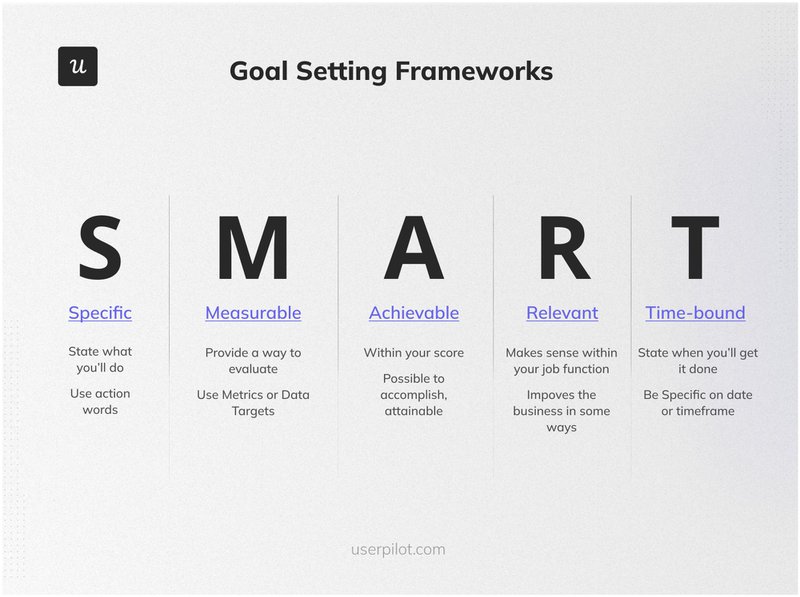
Examples of SMART goals include:
- Reach 1k daily active users in the next quarter.
- Increase user satisfaction by 25% in the next six months.
Also, you must define relevant product management KPIs to track each goal. These are measurable metrics that help you determine whether a goal has been achieved. For instance, if your goal is to expand your user base, the number of monthly active users (MAU) is a suitable KPI.
Step 6: Create your product roadmap
Now that you have a solid idea of where you want to go with your product, you need a plan to get there. That’s where a product roadmap steps into the picture.
A roadmap defines a timeline for product development, highlighting specific milestones and priorities. It helps implement your product strategy and cover all major features. Additionally, it improves collaboration between cross-functional product teams by providing a clear plan of action for each department to achieve the product vision.
Here’s an example of a product roadmap for a digital adoption platform:
- Q1: Launch a Minimum viable product (MVP) with core features (in-app walkthroughs, checklists, and surveys).
- Q2: Introduce integrations with popular CRMs (e.g., HubSpot and Salesforce).
- Q3: Add advanced analytics and reporting features.
- Q4: Launch a mobile app version.
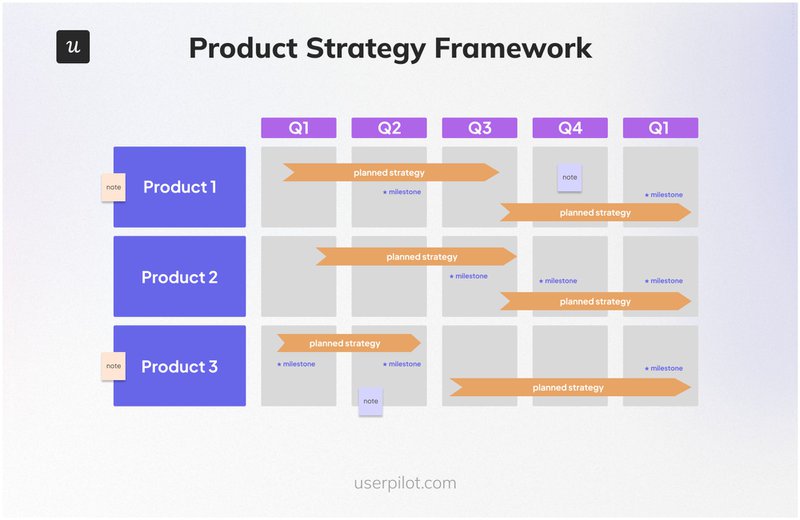
If creating a product roadmap manually seems like a lot, you can use roadmap tools like Wrike or Trello to simplify the process.
Step 7: Work on your positioning and messaging
Product positioning and messaging allow you to clearly communicate what sets your product apart and appeal to your target audience by addressing their pain points and desires.
Here’s a sample product positioning statement:
[Product name] is a [market category/product type] that offers [unique benefit] for [target audience]. [Product name] offers [distinct attributes/features] that make it better than [competitor].
On the other hand, messaging outlines how you’ll communicate product value and differentiation to potential users through channels like in-app messaging and social media.
Using a platform like Wynter can help you determine whether your messaging appeals to your target audience and adjust it accordingly.
Step 8: Develop a pricing strategy
Now it’s time to develop a pricing strategy that aligns with what users are willing to invest in your product while contributing to sustainable business growth. You can choose from different pricing models, such as:
- Usage-based pricing.
- Tiered pricing.
- Per active user pricing.
- Feature-based pricing.
- Pay-as-you-go.
Regardless of the model you select, consider offering a free trial or demo. It’ll give users a chance to experience your product’s value first-hand before signing up for a paid plan.
Take a cue from Userpilot’s pricing plans:
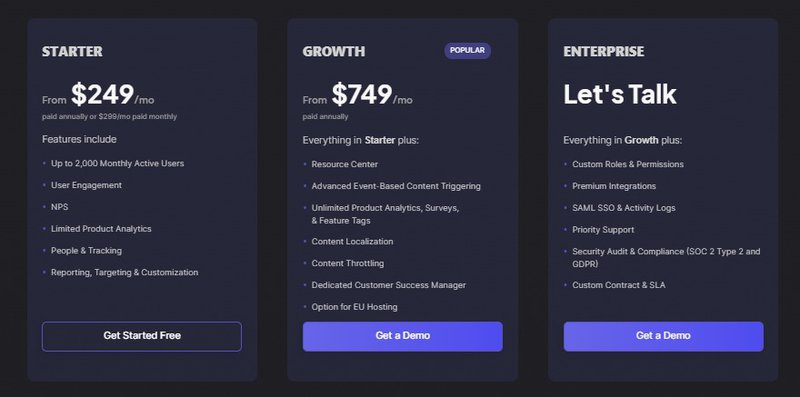
Step 9: Choose your marketing channels
In the absence of proper marketing tactics, even the most groundbreaking product will fail to attract users.
You can choose from various online marketing channels, such as:
- Email.
- Social media.
- Influencers.
- Search engines.
- Paid advertising (on search engines and social media platforms).
If you want to maximize the impact of your marketing campaigns, it’s a good idea to implement an omnichannel communication strategy. It ensures that you provide a consistent user experience across all channels.
Step 10: Analyze user satisfaction in-app
Powerful marketing can help you rope in new users. But if you want to retain users and win their loyalty, your product strategy frameworks must ensure that users are happy with your product.
The best way of doing that is to keep an eye on user sentiment and satisfaction levels. You can get insights into user satisfaction through in-app surveys. Gather user feedback through questions like “How would you rate your experience?” or “What would you like us to change?”. Then, conduct feedback analysis using your survey tool.
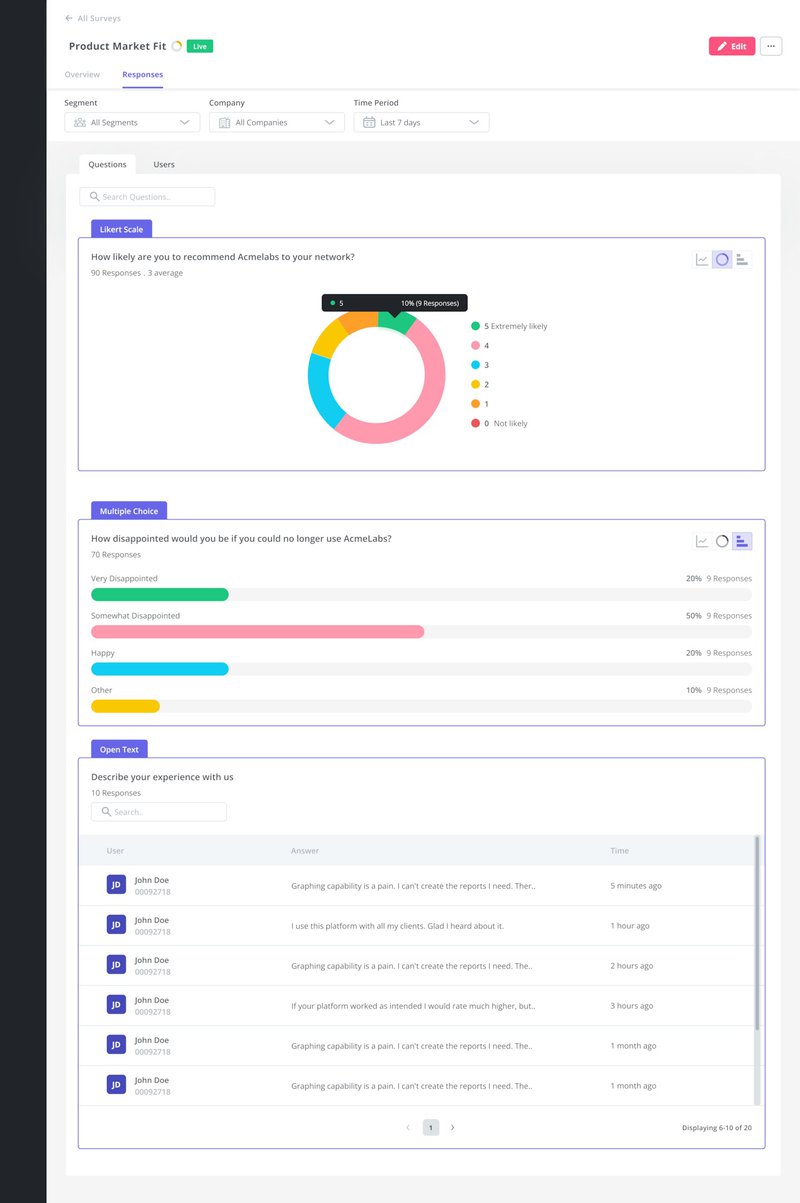
You can go a step further and monitor in-app user behavior to identify points of friction in the user experience. Use product analytics reports to collect and analyze quantitative data on user behavior, engagement, and satisfaction.
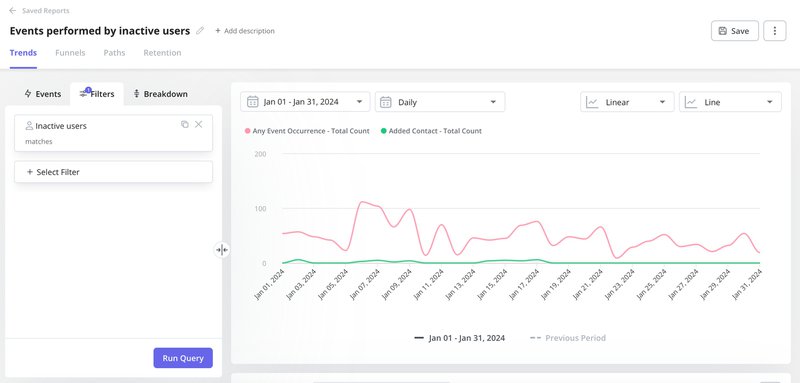
Step 11: Improve the product based on your findings
Use qualitative and quantitative data collected in the previous step to identify areas of improvement in your existing strategy.
For instance, if you notice users drop off after clicking on a particular feature, add tooltips to help them understand how it works and what they can accomplish with it. You can also use in-app behavior data to segment users and deliver a more personalized experience to each group.
Conclusion
A concrete product strategy framework is the key to building a product that meets user expectations and helps accomplish business goals. It involves several steps, from market research and goal setting to marketing and product analytics.
Ready to implement your product strategy framework and take your product to the next level? Schedule a demo of Userpilot to see how our product analytics insights and reports can help improve your offerings.








